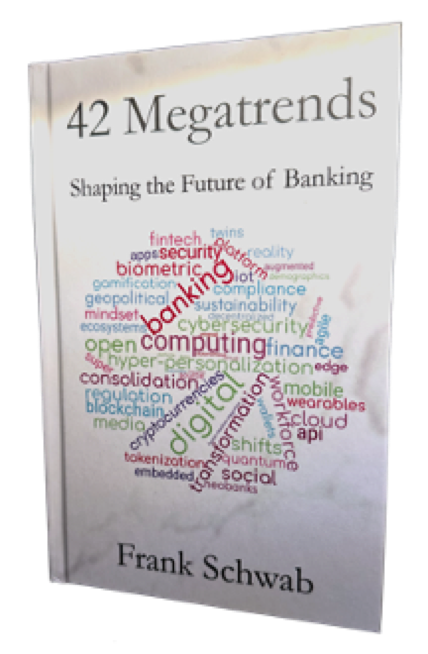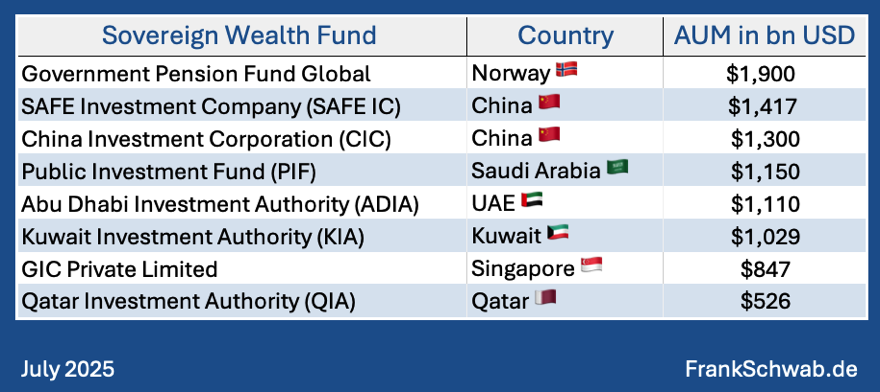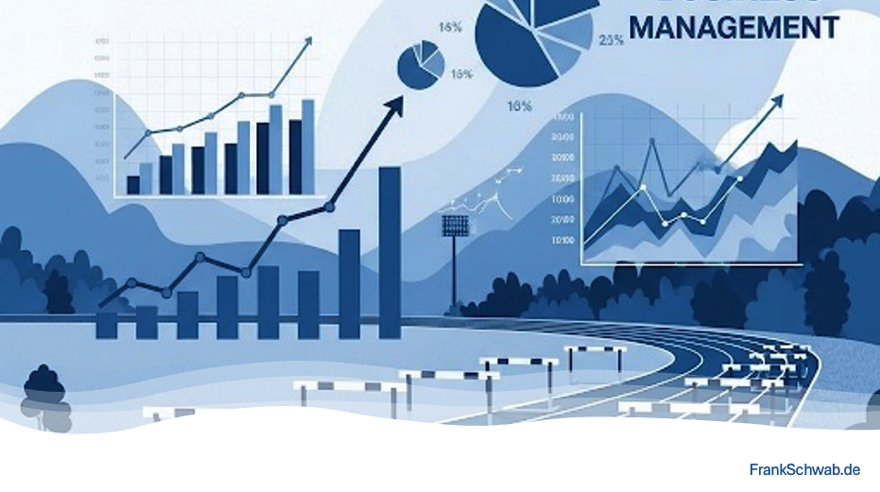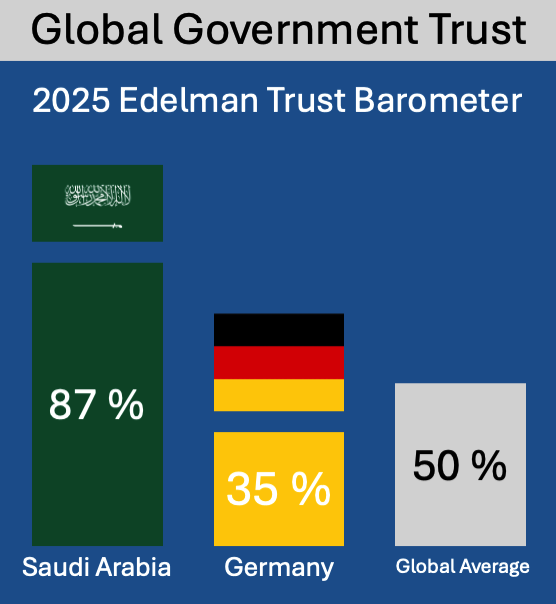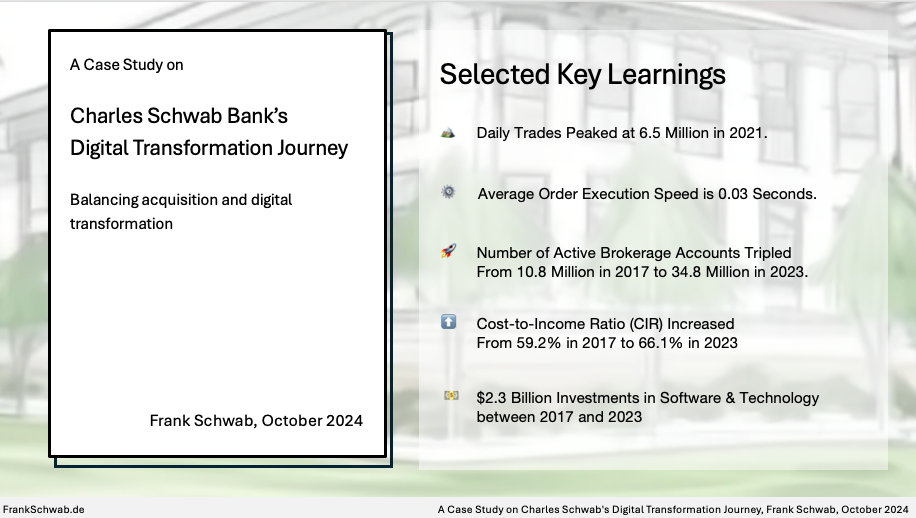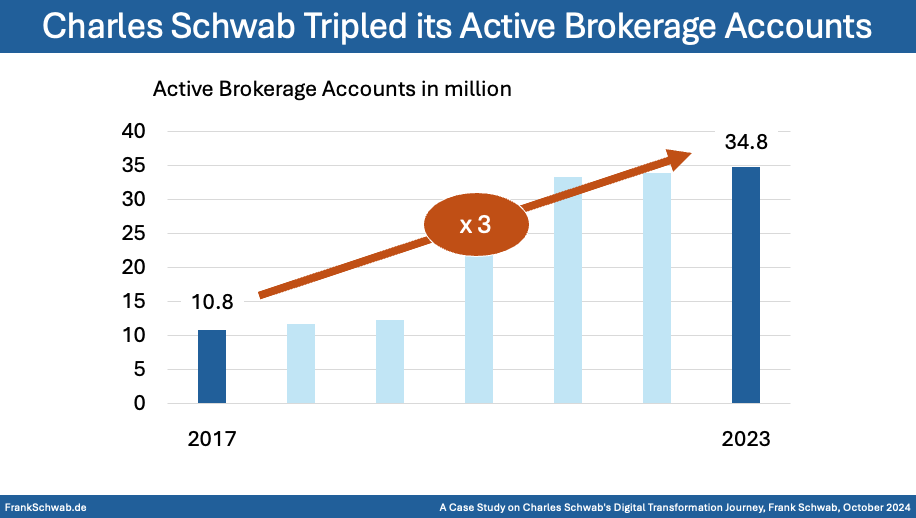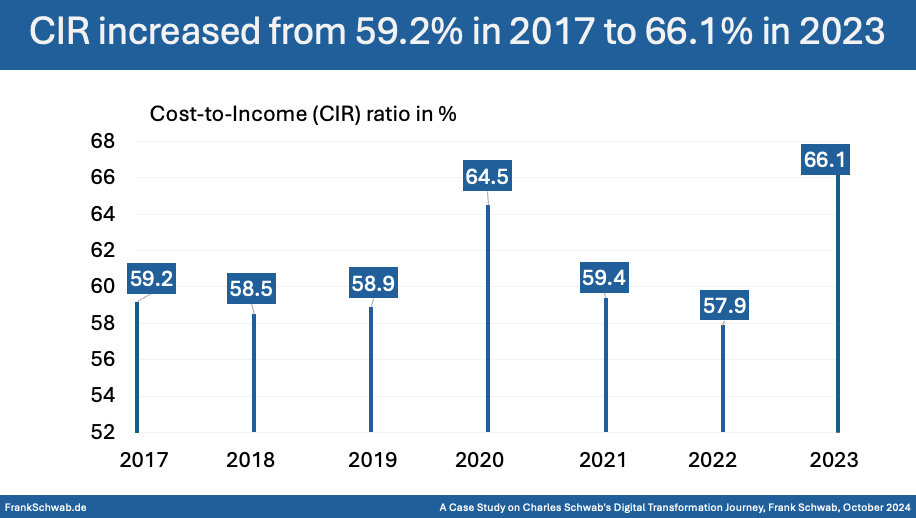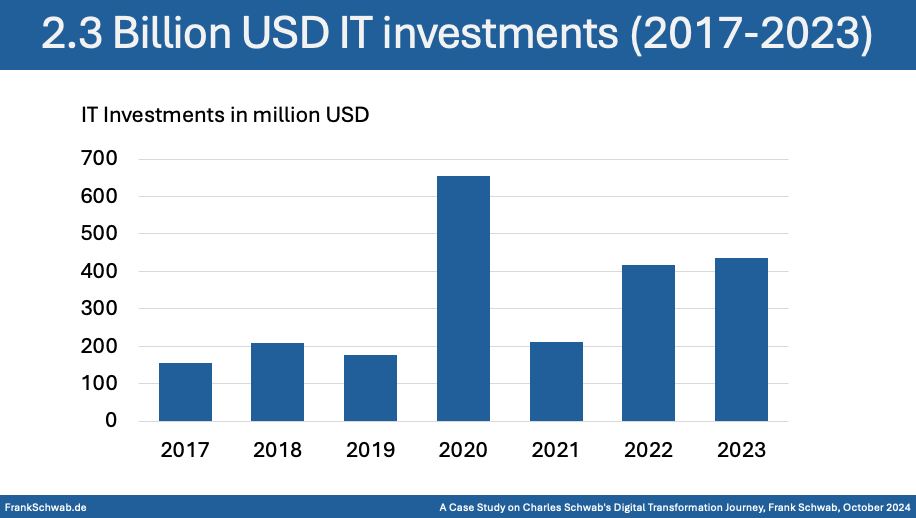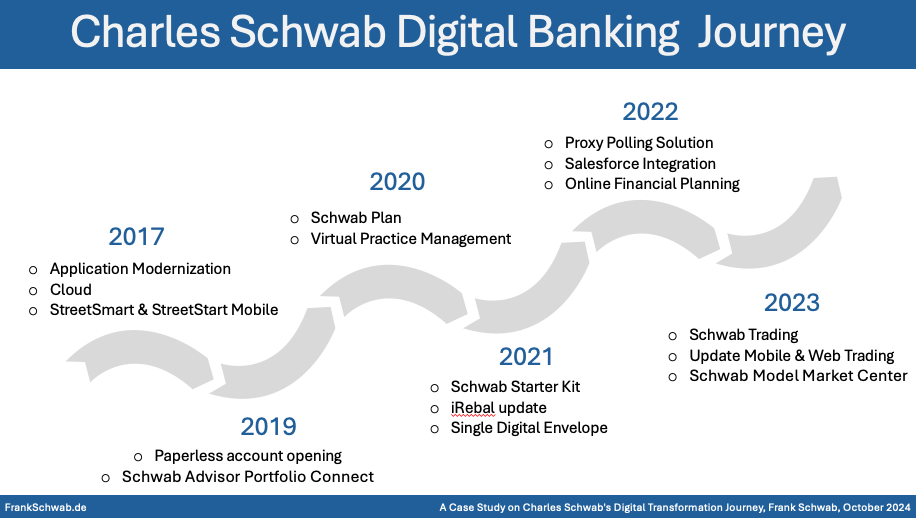Target Business Model & Strategy 2030 for an Average Corporate Bank
Last week we learned about the 11 updated mindsets in order to identify relevant megatrends. Today we will create a target business model & strategy 2030 for C-Bank, an average corporate bank by applying what we learned.
First we research megatrends in corporate banking and can identify at least 5 megatrend themes:
Theme I) Digital Transformation and Ecosystem Integration
📌 Hyper-personalization: Leveraging AI and data to tailor products and services to individual client needs.
📌 Embedded Finance: Integrating financial services seamlessly into non-financial platforms and business processes.
📌 Open Banking and APIs: Creating a connected ecosystem through open data sharing and collaboration with third-party providers.
📌 Blockchain and Distributed Ledger Technology (DLT): Exploring applications for secure and efficient transactions, KYC/AML compliance, and supply chain finance.
📌 Cloud-Native Banking: Migrating to cloud-based infrastructure for scalability, agility, and cost optimization.
Theme II) Sustainability and ESG Integration
📌 Sustainable Finance: Developing green financial products and services to support clients' transition to a low-carbon economy.
📌 ESG Risk Management: Integrating ESG factors into credit risk assessment and investment decisions.
📌 Impact Measurement and Reporting: Providing transparent and comprehensive ESG reporting to clients and stakeholders.
📌 Climate Risk Mitigation: Helping clients assess and mitigate climate-related financial risks.
Theme III) Data-Driven Insights and AI-Powered Decision Making
📌 Advanced Analytics: Leveraging big data and AI to gain deeper insights into client behavior, market trends, and risk factors.
📌 Predictive Modeling: Using AI to forecast financial performance, identify potential risks, and optimize decision-making.
📌 Real-time Data and Analytics: Providing clients with access to real-time data and insights to support informed decision-making.
📌 AI-powered Automation: Automating tasks and processes to improve efficiency and reduce costs.
Theme IV) Evolving Workforce and Workplace
📌 Remote Work and Digital Collaboration: Adapting to the changing nature of work and enabling remote collaboration through digital tools.
📌 Upskilling and Reskilling: Investing in employee training and development to build a future-ready workforce.
📌 Talent Acquisition and Retention: Attracting and retaining top talent in a competitive market.
Theme V) Geopolitical and Regulatory Shifts
📌 Regulatory Compliance: Navigating evolving regulatory landscapes and ensuring compliance with new regulations.
📌 Cybersecurity and Data Privacy: Protecting sensitive client data and mitigating cybersecurity risks.
📌 Geopolitical Risks: Assessing and managing geopolitical risks that may impact financial markets and client operations.
These 5 themes, when viewed through the lens of the updated 11 mindsets, provide a comprehensive framework for C-Bank to anticipate future challenges, identify new opportunities, and develop a robust strategy for long-term success in the evolving corporate banking landscape.
Now we check which theme is the best fit for C-Bank.
While the megatrend themes like Sustainability and ESG Integration and Data-Driven Insights and AI-Powered Decision Making also align with many of the 11 mindsets, digital transformation acts as an underlying enabler for these trends. It provides the technological infrastructure and capabilities to drive sustainability initiatives, leverage data analytics for informed decision-making, and offer personalized solutions to corporate clients.
Therefore, Digital Transformation and Ecosystem Integration emerges as a central mega trend theme that resonates strongly with all 11 updated mindsets. It encompasses the adoption of new technologies, the development of innovative business models, and the cultivation of a customer-centric approach to thrive in the evolving landscape of corporate banking.
Let's explore how Digital Transformation and Ecosystem Integration connects with each mindset:
- Embrace Constant Change & Anticipate Technological Disruption: Digital transformation is an ongoing process requiring continuous adaptation to new technologies and evolving client expectations. Corporate banks must proactively adopt emerging technologies like AI, blockchain, and cloud computing to streamline processes,offer real-time insights, and enhance risk management.
- Embrace Complexity and Systems Thinking: The digital ecosystem in corporate banking is complex, involving various technologies, platforms, and stakeholders. Banks need to understand the interdependencies and potential ripple effects of their digital strategies to provide seamless and integrated solutions to their clients.
- Challenge Dominant Narratives & Understand the New Economic Paradigm: The traditional banking model is being challenged by fintechs and platform-based solutions. Banks must question established practices and explore innovative partnerships and open banking initiatives to remain competitive.
- Embrace Global Diversity and Interdependence: Digital technologies enable banks to reach and serve corporate clients across the globe, requiring an understanding of cultural nuances and varying regulatory landscapes.
- Foster Lifelong Learning & Unlearning: The digital landscape demands continuous upskilling and adaptation to new technologies and business models. Banks need to invest in employee training and development to ensure their workforce remains agile and capable of navigating the digital transformation journey.
- Navigate Generational and Cultural Shifts: Different generations and cultures have varying expectations and preferences when it comes to banking services. Digital transformation can help banks tailor their offerings and communication strategies to cater to the diverse needs of their corporate clients.
- Understand the Power Shift to the Individual & Empower Collective Action: Corporate clients expect personalized service and proactive engagement. Digital platforms can facilitate collaboration and knowledge sharing between banks and their clients, empowering them to make informed decisions and achieve their financial goals.
- Navigate Paradox and Ambiguity: Digital transformation involves balancing the benefits of data-driven insights with data privacy concerns and managing the risks associated with new technologies.
- Cultivate a Global and Long-Term Perspective: Digital transformation requires a long-term vision and a focus on sustainable practices to ensure future success. Banks need to consider the long-term implications of their digital strategies for their clients, the environment, and society as a whole.
Now we are prepared to outline C-Bank’s target business model and strategy 2030:
C-Bank will proactively embrace the megatrends of Digital Transformation and Ecosystem Integration, guided by the principles of customer centricity, innovation, and sustainability.
C-Bank vision: Empowering businesses to succeed in a connected and sustainable world
C-Bank envisions itself as the leading corporate bank in the digital age, empowering businesses to succeed in a connected and sustainable world. This vision will be realized through a mission to provide innovative, client-centric, and data-driven financial solutions that enable corporate clients to navigate the complexities of the global economy and achieve their strategic objectives.
At the heart of C-Bank's 2030 business model lie three fundamental pillars:
- Digital Core: C-Bank will establish a robust and agile digital foundation by migrating all core banking systems to a secure and scalable cloud infrastructure. This shift will enable greater efficiency, real-time data analytics, and seamless integration with third-party platforms through open banking APIs. Furthermore, C-Bank will leverage AI and machine learning to automate processes, enhance risk management, and provide personalized insights to clients.
- Ecosystem Orchestrator: Recognizing the interconnected nature of the digital economy, C-Bank will actively cultivate a thriving ecosystem. This involves forging strategic partnerships with fintechs, technology providers, and other industry players to expand service offerings and create value-added solutions. By developing and integrating with digital platforms, C-Bank will connect corporate clients with a broader network of stakeholders, facilitating trade, supply chain finance, and other critical business activities.
- Sustainability Champion: C-Bank will be a leader in sustainable finance by embedding environmental, social, and governance (ESG) considerations into all lending and investment decisions. This commitment extends to offering impact investing products and services, enabling clients to align their financial goals with their social and environmental values. Transparency will be paramount, with C-Bank providing clients with clear and comprehensive ESG reporting to track their impact and make informed decisions.
To achieve this vision, C-Bank embarks on 3 key strategic initiatives:
1️⃣ Accelerated Digitalization: Fast-track the digital transformation of all core banking processes and client-facing services.
2️⃣ Ecosystem Expansion: Build a robust network of partners and develop platform-based solutions to expand service offerings and reach new markets.
3️⃣ Talent Development: Invest in employee training and development to build a digitall savvy and customer-centric workforce.
By embracing digital transformation and ecosystem integration, C-Bank will not only meet the evolving needs of its corporate clients but also drive sustainable growth and solidify its position as a leader in the financial industry of the future.
http://www.FrankSchwab.de
#banking #digital #digitalbanking #strategy #mindset #megatrends #transformation #digitaltransformation

